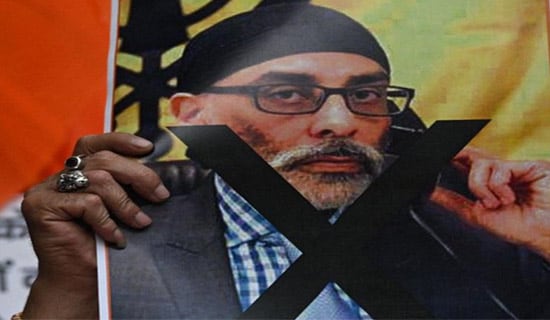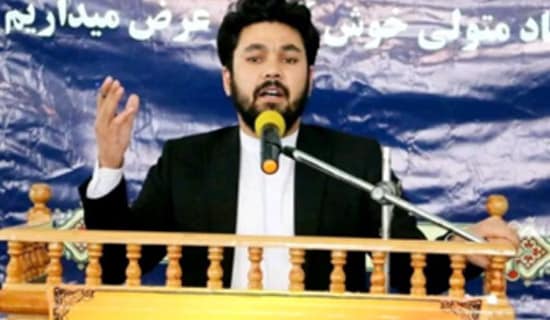
Indian security agencies are failing to identify Indian Mujahideen members
A recent report in the Indian media examined how Indian security agencies are clueless about the network of Indian Mujahideen (IM) and its role in several terror attacks in India in recent years. The IM is believed to have emerged from the Students Islamic Movement of India (SIMI).
The report, published in the Outlook weekly magazine, noted that the Indian security agencies either do not know or can not agree upon IM's structure. The IM was first suspected as being an indigenous terrorist outfit after the July 7, 2006, Mumbai local train blasts that killed 166 people, and is alleged to be supported by Pakistani terror organization Lashkar-e-Taiba (LeT).
The report noted: "Top leadership and cadre of IM is drawn mostly from SIMI (Students Islamic Movement of India). A meeting in Hubli [town of], Karnataka, in April 2007 is believed to be the starting point of IM."
Following are excerpts from the report:[1]

"The Figurehead of… [Indian Mujahideen]… Riyaz Shahbandari, or Riyaz Bhatkal as He is Called, Eludes the Country's Security Agencies"
"Pipe Road, Kurla West, Mumbai, is not an address anyone would aspire to. Filth and squalor stretch for miles on end, and the stench rises up to the structures that pass off for homes. In this underbelly of Mumbai lies a locked-and-sealed door. It used to be the office of the now-proscribed Students' Islamic Movement of India (SIMI). A few paces away stands Qadri building, where Ismail Shahbandari owned two rooms.
"Last known, he had leased them out in mid-2010 for a monthly rent of… 3,000 [Indian Rupees] each. 'Here – do you see that room – is where India's jihad boss used to live. My friends and I look at it on the way to school and wonder what it would be like to be part of their project. I would like to be trained like them,' says S (name withheld), a teenager who has been fed on 'heroic' stories of Roshan Jamal, alias Shahrukh alias Riyaz Shahbandari. S aspires to meet him and learn how to 'give the country a thousand cuts,' a phrase he has clearly heard often, though in hushed tones. 'You see these tough-looking guys there? They are cops or khabris (informers) of cops,' he says, as if disclosing a secret. 'Hundreds of such men all over are not able to trace our Shahrukh.'
SUPPORT OUR WORK

"It's a surreal statement. The words of a wide-eyed teenager almost worshipping the figurehead of India's indigenous terror organization reverberate with the cold truth that Riyaz Shahbandari, or Riyaz Bhatkal as he is called, eludes the country's security agencies, as do most of his colleagues who make up the Indian Mujahideen (IM), which is held responsible for terror attacks in [the states of Maharashtra, Karnataka, Andhra Pradesh, Uttar Pradesh [UP], Gujarat and Rajasthan.
"The IM assumed its name only in 2005 when internal ideological battles in SIMI forced the moderates out and converted it into a fanatical anti-India organization. The IM as a home-grown terror organization came into the limelight only five years ago, but the more ideologically proselytized members such as Riyaz and his earliest compatriots had left their fingerprints long before on bomb blasts that had rocked various cities of India."
"If IM is… the Face of Indigenous Terror and has Been at Work for a Few Years, It's Chilling to Know that [Indian] Security Agencies Tracking It Either Do Not Know or Can Not Agree Upon What It Looks Like"
"A spate of arrests between September and November 2008 – which brought some key IM members from UP, Gujarat and Maharashtra into the police net – appeared to have 'neutralized' the organization. 'But we were kind of surprised to see their footprint back again in some blasts of 2010 across the country,' says a senior Maharashtra police officer. In the Mumbai July 13 [2011, multiple] blasts too, IM is emerging as the likely suspect.
"Does July 2011 then mark the return of IM after a brief hiatus? Or is it just a convenient 'fall guy' option for anti-terrorism squads (ATS) of various state police, and more recently the National Investigation Agency (NIA)? Pieced together from various ATS dossiers, chargesheets that detail the IM, and conversations with serving and retired security officers, emerges the picture of a shadowy, sinister outfit of brainwashed young men, pursuing an anti-India agenda with support coming from the LeT [Lashkar-e-Taiba of Pakistan]. 'We have only been able to catch the local guys; their main leaders are in Pakistan,' says former Maharashtra DGP [Director General of Police] A.N. Roy.
"If IM is, indeed, the face of indigenous terror and has been at work for a few years, it's chilling to know that security agencies tracking it either do not know or can not agree upon what it looks like. Despite the presence of the NIA, a central agency mandated to coordinate anti-terror and security issues with states, there is little clarity on how many IM members are still in India, what aliases they are using and what their systems of communication are.
"Take Riyaz Shahbandari 'Bhatkal,' for instance. He reportedly fled to Dubai, then to Pakistan, where Mumbai police sources say he was housed in Karachi's Defence Enclave until his Pakistan handlers pushed him back to the UAE. However, underworld don Chhota Rajan [a Hindu criminal of Mumbai] claimed in January this year that his men had killed Bhatkal in a Pakistani hospital. There has been no official confirmation of this."
"The IM's Footprint Extends Across [the States of] Uttar Pradesh, Madhya Pradesh, Maharashtra, Gujarat, Rajasthan, Karnataka, Andhra Pradesh, and Kerala"
"Similarly, Mohsin Chaudhary, a key conspirator in the Pune German Bakery blast in February 2010, eluded investigators for months. He was reportedly tracked 'crossing over to Pakistan in September 2010' and the trail went cold after that. Investigators now believe he could have been instrumental in recruiting and training new strike groups, called cells, one of which executed the three blasts on July 13 in Mumbai [this year].
"There is also Mohammed Zarar Bawa aka Yasin Bhatkal, allegedly the bomb-planter in Pune as well as Bangalore's Chinnaswamy Stadium last year, who blithely kept changing identities to slip under police radars. Not just him, other key IM leaders too may have escaped surveillance by using false identities.
"Clearly, the inability of India's security agencies to evolve a clear and comprehensive strategy to combat homegrown terror is proving costly. The IM's footprint extends across Uttar Pradesh, Madhya Pradesh, Maharashtra, Gujarat, Rajasthan, Karnataka, Andhra Pradesh, and Kerala. In a classic textbook case of what-not-to-do, the 21 alleged IM members arrested in Mumbai and Pune in 2008 were shifted from state to state because they were wanted in blast cases in those states. The Maharashtra ATS [Anti-Terrorism Squad] stopped keeping track of them until the July 13 blasts when they realized that the 'arrested men had had unexplained visitors with fake identities.'
"Intelligence experts argue, as Vikram Sood does in his book Radical Islam in South Asia and Implications for the Region, that homegrown terror is 'a new phase of terrorism within India, where international terrorist groups like LeT and HuJI [Harkat ul-Jihad al-Islami] are likely to exert influence on a small and diffused group of individuals to take up arms against the state in the name of religion.' But the security response has been a bit scattered. Rather than a cohesive counter-terrorism strategy, there's the spectacle of the ATS of different states tracking the organization, the NIA attempting to knit it together but limited by the mandate to not step on state police toes."
"The IM… is Not One Monolith Organization With a Central Command; It's More a Cluster of Several Modules Spread Regionwise – North, West and South India – Where Each Module Works Independent of the Other"
"The IM, sources say, is not one monolith organization with a central command like an underworld gang. It's more a cluster of several modules spread regionwise – north, west and south India – where each module works independent of the other and each has four to five sleeper cells in it. The top level of the organization is believed to comprise educated professionals, while the foot soldiers are recruited from lower-middle-class areas, especially those that nurse grievances against Hindu organizations or states. Most IM e-mails post the blasts have quoted the 2002 Gujarat riots, where Muslims suffered.
"'The concept is to recruit primary members, known as ansars [helpers], who gather information, provide nesting facilities and ideological support, and enlist assistance from like-minded separatists for an operation,' says Malay Krishna Dhar, former joint director of IB [Intelligence Bureau of India]. 'Then cells are created with a group of people for a particular mission, called tanzeems [organizations/units]. In various cities of UP, the tanzeems are very active and have a strong base.'
"Counter-terrorism experts and police officers find themselves on the same page as far as the difficulty in dismantling the IM is concerned. 'It's not like the [Mumbai's criminal] underworld which is easy to penetrate and get information about,' says ATS chief Rakesh Maria. 'IM members do not have a criminal background, they stay closely knit and it is very difficult to create sources within and get information.'
"Then, there is a section of Indian intelligentsia and a large part of the Muslim community which questions the very existence of IM. 'It has become fashionable after every blast to pin blame on the IM, but what is the IM? If cops know so much about it, why don't they simply eliminate it?' asks Maulana Mustaqeen Azmi of the Jamait-ul-Ulema-Hind. Others say Indian agencies would be aware of the IM's principal funders/donors. Why can't they follow the money trail and bust much of the so-called support to the IM?..."
Endnote:
[1] Outlook www.outlookindia.com> (India), August 1, 2011. The text of the report has been lightly edited for clarity.




